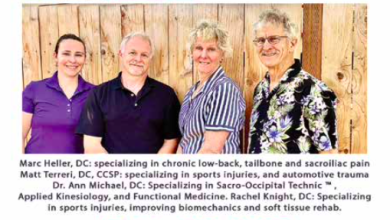A bit about the shoulder
The shoulder, formally called the glenohumeral joint, is the most mobile joint in the body. However this mobility comes at the cost of stability. Shoulder problems, including pain and limited range of motion, are very common complaints. The term shoulder girdle is the complex system consisting of 4 joints, the collar bone to sternum, collar bone to scapula, scapula to ribs and humerus to scapula as well as over 20 muscles, tendons and ligaments. They work as one unit, and if any part of this system stops doing its job the body will compensate in order to maintain normal function. This compensation will often cause overuse of certain muscle groups and weakness of others.
The shoulder’s usefulness as a highly mobile joint assists us in a wide variety of daily activities. A stiff or painful shoulder can make activities difficult, such as putting on a shirt or pulling items out of a cabinet. Having poor range of motion puts the shoulder at risk for injury. It is important to move your shoulder in its full range of motion regularly so you notice if it becomes limited.
Because of the shoulder girdle’s complexity, a broader view must be taken to correct dysfunction and get rid of pain. Position and mobility of the neck, collar bone, scapula and thoracic spine must be considered when addressing a shoulder problem. It is very common for the majority of the day to be spent with the head forward and the shoulders in a forward/rounded position. This causes shortened muscles in the front of the body. The muscles in the back become overworked/lengthened and will often have “muscle knots”. This muscle imbalance frequently leads to pain, buildup of scar tissue, and decreased range of motion in the shoulder.
Many people seek medical care for shoulder pain that begins with an x-ray, or an MRI which will often reveal some sort of arthritis, muscle or tendon damage or just less spacing between bones than is considered normal. These findings are incredibly common, and do not mean you will no longer be capable of having a fully functioning and pain free shoulder. Bodies are highly adaptable, resilient, and capable of recovery from most shoulder issues. Too often people feel hopeless after some abnormal findings on imaging, when with the right guidance and some persistence the area could feel as good as it ever has, but it will mean doing the work.
Treatment in our office will focus on restoring mobility and strength to the shoulder girdle. By stimulating remodeling of soft tissues, lengthening tissues that have become chronically shortened, correcting poor movement patterns and strength training, many shoulder problems can be resolved.



